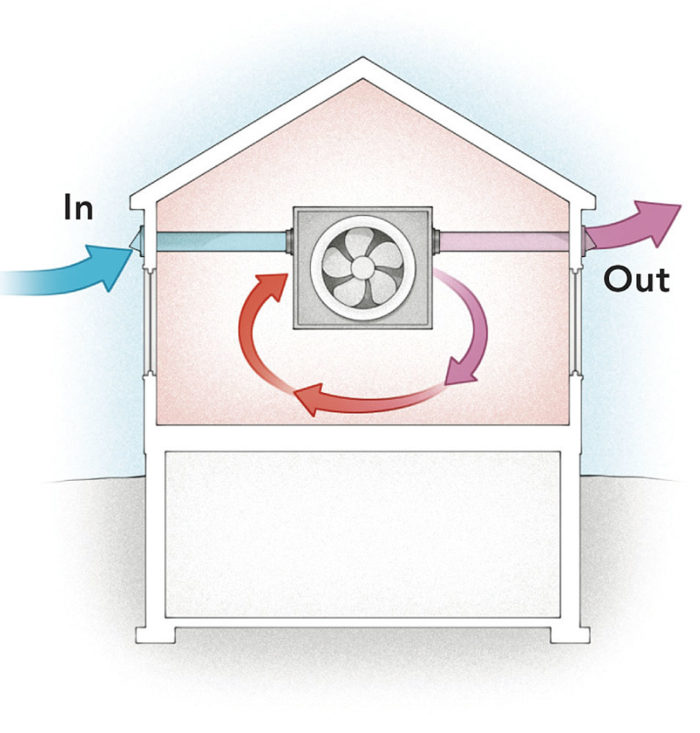
Image Credit: Christopher Mills
Houses need fresh air. Without ventilation, the quality of indoor air can rapidly become worse than that of the outside air; that holds true even in urban areas. Common contaminants include gases, odors, and moisture, and these can stem from utility rooms, garages, basements, bathrooms, and kitchens.
Until recently, fresh air entered a typical house through various openings, whether intentional (a fan or open window) or unintentional (holes and leaks around windows, rim joists, door jambs, and sheathing penetrations). Over the last few decades, however, houses have become tighter, and the unintentional flow of air through the building envelope has been reduced. Once a house reaches about five air changes per hour (ACH), it’s important to start thinking about using mechanical ventilation to ensure indoor-air quality.
In regions with moderate to significant heating and/or cooling loads, HRVs and ERVs are the most efficient means of mechanical ventilation. Depending on the efficiency of the heat exchanger, it can transfer anywhere from 50% to 91% of the conditioned air’s heat and energy to the supply air.
Homeowner satisfaction with a recovery ventilator will depend on the answers to three questions: Does it keep the air temperature comfortable? Is it cheap to operate? Is it excessively noisy?
Does it keep the air temperature comfortable?
Comfort speaks to a unit’s thermal efficiency. Thermal efficiency is the recovery ventilator’s ability to transfer the temperature of the outgoing air to the incoming air. When a unit transfers a high percentage of the heat or cold to the incoming air, the fresh air can be diffused directly into the living space without creating cold drafts in the winter and warm eddies of air in the summer.
To compare the effects of efficiency on indoor-air temperature, let’s say the indoor temperature…
Weekly Newsletter
Get building science and energy efficiency advice, plus special offers, in your inbox.

This article is only available to GBA Prime Members
Sign up for a free trial and get instant access to this article as well as GBA’s complete library of premium articles and construction details.
Start Free TrialAlready a member? Log in





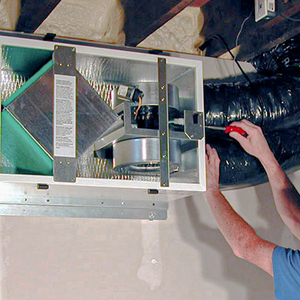
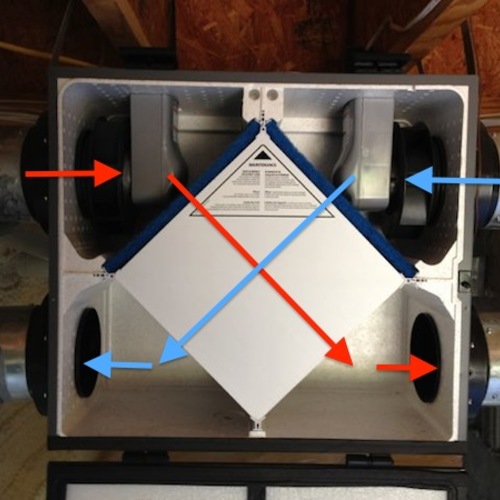
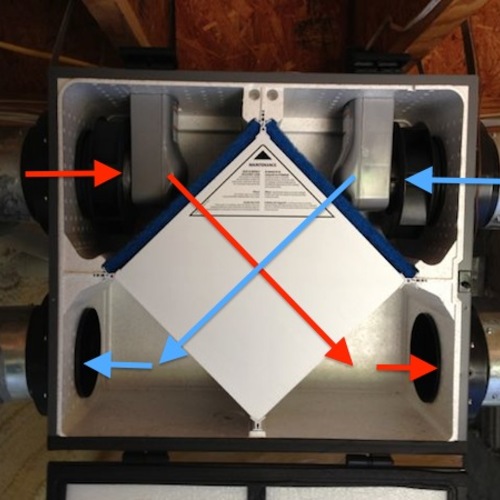
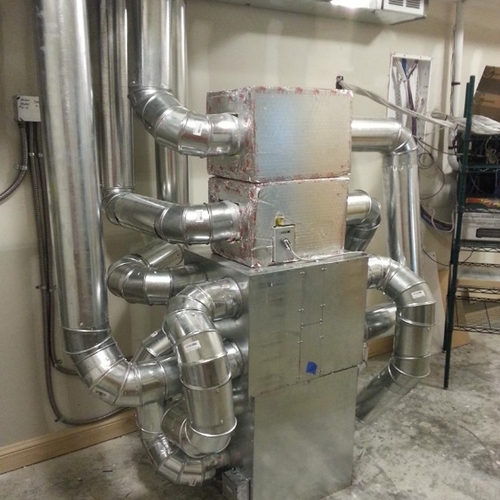






5 Comments
Response to Malcolm Taylor
Malcolm,
As far as I am concerned, this author's decision to label exhaust-only systems as "bad" and supply-only systems as "better" does not add to our understanding of the strengths and weaknesses of different ventilation approaches.
Many small homes are successfully ventilated with exhaust-only systems, and this type of system can be very cost-effective.
Exhaust vs Supply
I'm still not sure how pressurizing the house with an supply only system is a good thing. It may be better for the occupants as they can filter the incoming air, but for the building itself it increases air leakage into the walls and roof, which is never good.
What contaminants are avoided with balanced or supply-only vent
The author indicates that with exhaust-only ventilation the incoming air "could as easily come from the garage, basement, or utility room as around the jambs of a second-floor window."
I understand the risks of CO from the garage and backdrafting non-sealed-combustion appliances. There are ample recommendations on BGA of how to handle both, and those recommendations do not rely on balanced or supply-only ventilation.
What does the science say, and what has been measured, in terms of contaminants coming in from the basement or miscellaneous cracks? Has the building science been done to measure lower VOCs, airborne particles, mold, radon, humidity or other contaminants when the incoming air is controlled and filtered via supply-only or balanced ventilation?
Phil
The other assumption seems to be that there are no passive air supply vents (or windows) being used with the exhaust only system.
Response to Phil Ray
Phil,
I have never seen any data that indicate that exhaust-only ventilation systems result in poor indoor air quality. Some, but not all, studies have shown that distribution of ventilation air (especially in bedrooms with closed doors) is poor in homes with exhaust-only systems. Poor distribution of ventilation air is not the same thing as evidence of contaminated air entering the house.
Log in or become a member to post a comment.
Sign up Log in